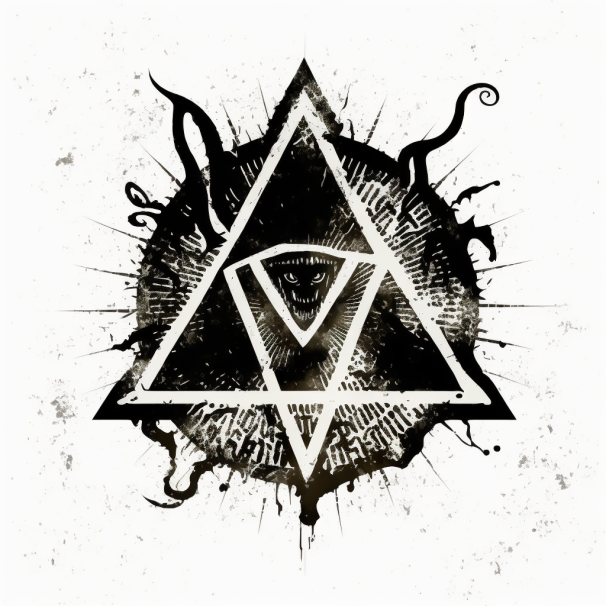In celebration of Longshot Behind the Radiation Curtain at the Commonwealth Casino being published I created a couple free to download resources for Party First. It got me thinking about how I play the game that may help other folks too!

It is no secret that I adore the tabletop rpg Party First by Gamenomicon. It is the first game in my thirty years of roleplaying experience where the mechanics are a perfect marriage to the setting. Being one half of the writing team for Twilight War gave me a deeper appreciation. I had no idea that the spy/horror genre was one that I would take to so quickly or with as much fervor.
I dream about new scenarios blending long forgotten black op projects with blood-soaked results. Government cover ups to protect citizens from discovering a horrifying truth. Party members joining secret societies* hoping to find sanity in a world gone mad. I cannot get enough of this stuff!
And just like anything else you love, you can’t just leave it alone. I have mettled and meddled with the concepts and mechanics of Party First to just feel more…fair(?); to me anyway. The core game is more into the celebration of a shared theater of the imagination. Where the GM doles out punishment as a way to enhance gameplay.
Sounds amazing in theory. However, I know most GMs are cruel gronards with a penchant for TPKs**. Delusional gods of mayhem and destruction. Nary a one of them is constrained by common sense to NOT make their players miserable for the sake of a good time. That is their lot in life. Here are some house rules to keep your players alive, just for a little bit longer.
The House Rules
The balance between the GM and the players is not equitable. The GM will always accrue Tension Points much faster than players will earn Party Points. Halfway through missions I’ve often had north of 20 tension points to punish my players. This makes checks against the environment unwinnable, adversaries viewed as the easier obstacles when they should be the big bad, and a slippery slope to the aforementioned TPK.
1. Environment conflicts are hard capped at 10 dice
This one is easy. Ten dice is still a TON of dice. I introduced this one pretty early for two reasons. I wanted the players to at least have a chance at winning versus the environment. And more than ten dice in hand just feels gluttonous.
2. Exploding tension ONLY happens once at each integral of 10
I keep a running tally of two tension point pools. One for the total gained and another for my current pool of tension points. I only trigger Tension Tables according to the total tension gained. NOT based on my fluctuating pool. As the rules are written it is feasible for me to trigger the Tension Table every…EVERY time I roll dice by spending just enough to get below 10. It is reasonable to assume I will gain at least 1 tension point every conflict roll.
3. Remove the ability for the GM to spend 1 tension point to add +x, x being the amount of current tension points
I recently put together a cheat sheet where I completely omitted this forgotten rule because my playgroup nuked it after the second adventure we ever played. It is, uh… overpowered.
4. Adversaries keep 2 dice instead of 3 dice
This one I keep going back and forth on. I’ve played with it so much that it is probably just going to stick at this point. My thought on it is twofold: one, it forces me to spend more tension points during the adventure. Two, in my early writing for Party First I introduced (what I thought) easily beatable Fire Haunts in the The Butcher, The Baker, the Drekavac Maker adventure. They ONLY have a two dice pool so I didn’t even have the option to keep a third in this case. Those little bastards have nearly TPK’d two different groups.
Spirit of the Game
In an effort for continuing parity between the GM and the players I have come up with the Tension Point Bleed theory. There needs to be natural valves for the GM to spend tension points throughout adventures. Otherwise there is a tendency to hoard them like a Tension Point Dragon gleefully waiting for that one conflict to turn deadly as you drop double digit tension points.
Climbing a building should present a dangerous situation. Not a pointlessly lethal obstacle on their way to solve a casefile. So, in the spirit of the game I have cobbled together some guidelines.
5. Always use or create Adversary abilities that cost tension points to trigger
Anything that contributes to the consistent bleed of tension points from the GM is a good thing. Especially if it makes the adversary feel unique or present a new or different challenge.
6. Create a tension table devoid of gaining more tension
Getting a feel for what makes a dynamic tension table just takes experience. I want to present a new challenge to the scene without requiring the players to roll more dice. There are two things I specifically omit from each of my tables now. The first is just adding more tension for the GM. To me it feels like an artificial accelerant devoid of input from the player. The second is introducing another Adversary to the scene (unless the scene really warrants it but I will defer this to my sixth point). A zombie bursting through the walls during a social based conflict just doesn’t make sense. It also touches on the first point that it is just going to accelerate the GMs tension point gain exponentially.
7. Create a tension table devoid of losing party points
Very similar to point #2. Gaining party points is not the easiest thing in the world. The class bonuses are fairly vague and rarely get used in my game. I think there is a world where the character’s background as well as party and Party dynamics, independent of their class, will be a role-playing motivation to gain party points.***
8. Add plot threads as a tension point cost
Creating alternate levers the GM can pull based on tension point expenditure is the summit of the Wound by Tension system. There are no rules for this (yet!) but the Dead Drop adventure in the back of the Twilight War rulebook has a couple interesting scene threads. The idea is the GM can spend tension to further complicate a scene. Like; cause an avalanche, have a superior show up, or let an adversary escape.
Party First Philosophies
In my mind a role-playing session should be a shared experience to build the most amount of storyline drama with a great payoff at the end. The Wound by Tension mechanics do a wonderful job of automatically instilling a creeping doom feeling for the players. The GM acts like a chef; sprinkling in bursts of flavor drama without completely taking over the adventure.

It is imperative to start each adventure with an interesting interactive scene that forces the players to make conflict rolls to seed the tension pool. This shouldn’t be a life-or-death situation OR a way to hide important clues. Just enough to make future conflicts uncertain. I’m partial to crooked card games, investigating a crime scene, or badgering witnesses for information.
Afterwards, never force conflict rolls. Let the players take over at that point. If the introduction scene was compelling enough they should WANT to make rolls to dig deeper into the storyline. Every published adventure I write is filled with possible conflict rolls acting as a guide for the GM. They are never required.
It should be possible to move through a scenario without generating too many conflicts. Anything where a failure impacts the storyline should necessitate a dice roll. Other than that, I try to keep frivolous dice rolls to a minimum. It’s ok to just tell the players something will not work or they can not get information that way. Don’t be a Tension Point Dragon!
I have yet to run an adventure where the final scene wasn’t laden with crucial point spends for both the players and the GM. In order to make the best possible play experience it is best if both parties are on level playing ground. But, it never hurts to think of the Party First!

*Easter Egg! After the Project Morningstar trilogy I have already spoken with Will about creating a new kind of future for content called a Serialized Release Schedule. These are shorter, one-shot missions with a loose interconnected storyline titled The Children of Cronus.
Fun fact: it was the original storyline that just kinda got outta hand. It currently sits at five (!) already written encounters with two more already outlined. I have a tentative ending but I’m hoping we can do serialized releases one a year. I may or may not have started a second one that feels a lot closer to Indiana Jones in temperament with the obligatory trip to alternate history Nepal! Just what did that special ops squadron unearth during the long war?
**TPK; Total Party Kill. A complete annihilation of the characters to a person. Not unheard of in horror games but I feel it should be done sparingly. Sometimes fun and the point of the mission!
***A boy can dream! Maybe a future article?